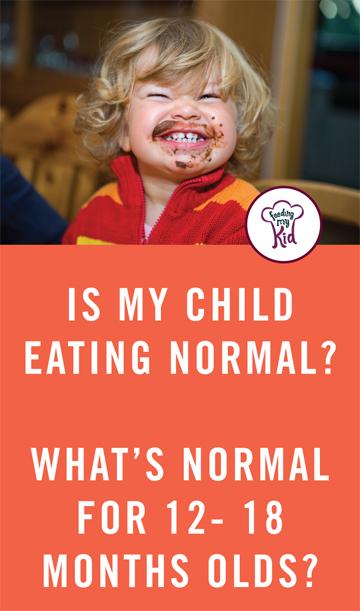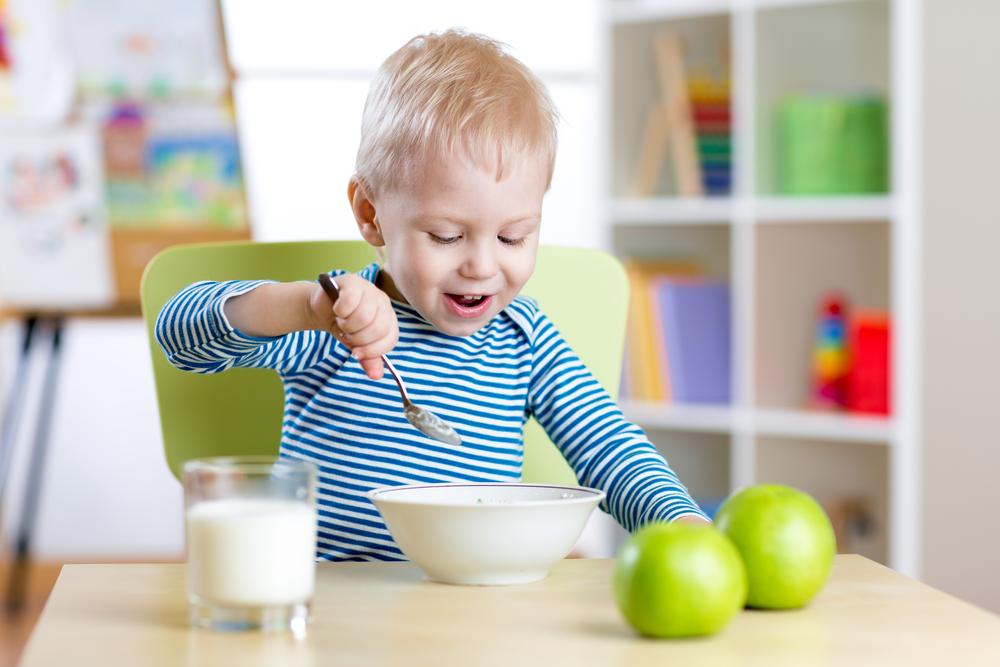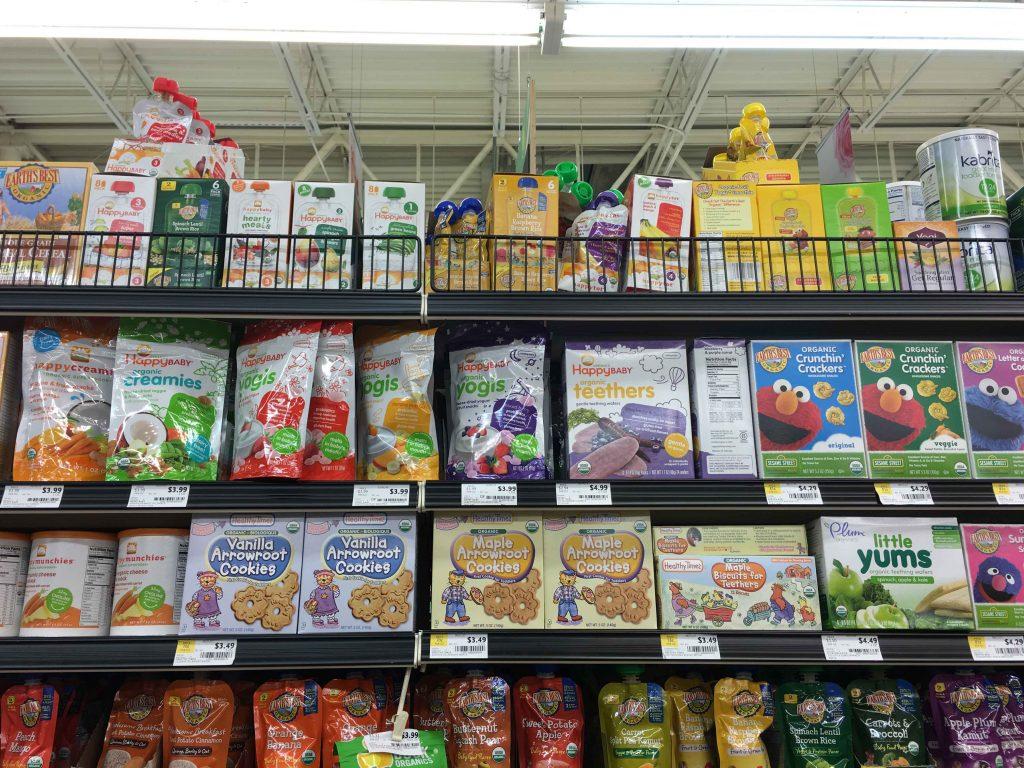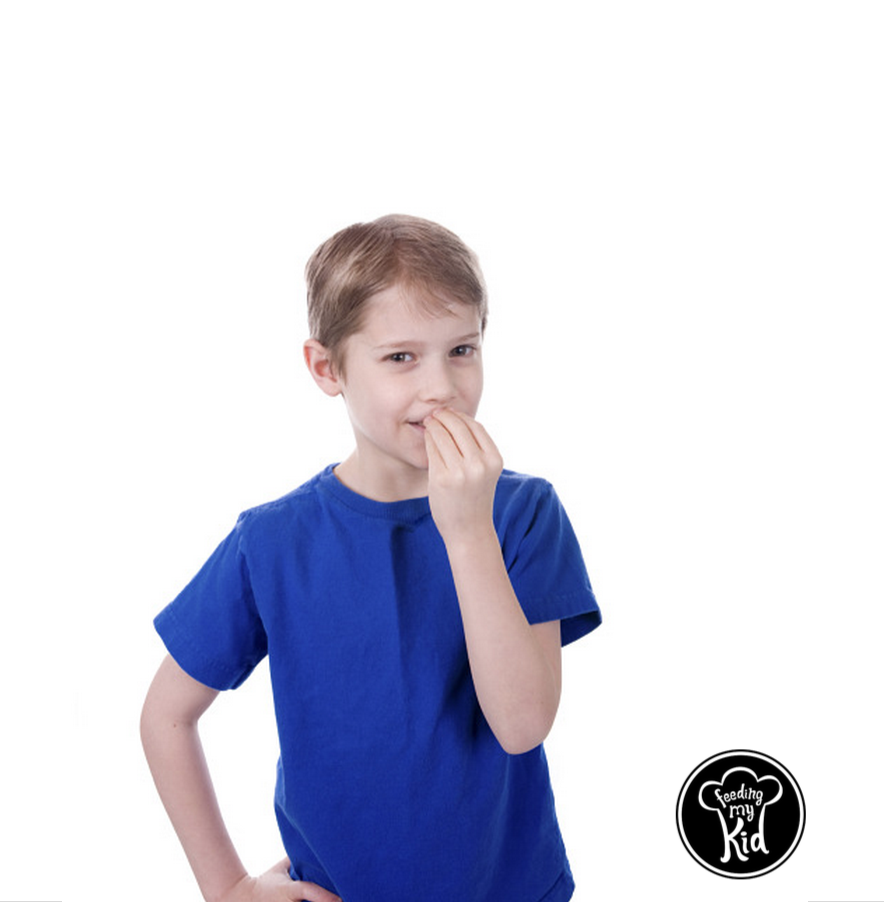
It’s amazing how much we question what’s normal. I’ve heard my mom friends worry about their child’s eating. Are they eating too much? Are they eating too little?
Does your little one throw food on the floor or do the dreaded hand shimmy to fling food all over the place? I can attest to what a mess that creates. But don’t worry. It’s all normal.
How Much Should My Child be Eating?
This is such a common question and concern.
At this point, your new toddler is slowing down in growth, which can slow down his appetite. He does not need to eat as much as he did before he turned one because he doesn’t need the same amount of energy to grow as he did before.
During the first year of life, on average, a baby grows 10 inches (25 centimeters) in length and his body weight increases by 300%! So you can see why your little one needed to eat so often throughout the first year.
From ages 1-2, growth dramatically slows down and for infants. Your baby might only grow 2-4 inches. This is why his appetite fluctuates so much during his age.
Some Days He Eats Everything, Sometimes Virtually Nothing
You will see some days where it looks like your toddler is sustaining himself on air and other days he eats everything on his plate. It’s related to the amount of energy he needs to grow.
Generally, toddlers should be eating 1 TBSP of food from each of the main food groups per meal per year of life. So if your child is 18 months, he should be eating 1.5-2 TBSP of protein, carbs, fruits, and vegetables.
It is completely normal if he eats 3 TBSP or even 4 TBSP of one food group and not eat anything from the other food groups during a meal. Studies show that it evens out throughout the week and it is completely normal and healthy. So no need to be concerned.
As the parent, just keep offering him healthy food options with each meal. Personally, I didn’t offer my twins carbs until they started to slow down eating the protein and vegetables. I wouldn’t even have it on the table until it was time to serve it. I selectively bring out food for them.
Make Meals Enjoyable
 The big focus on your meals should be enjoying a meal together as a family! Make meals enjoyable, even when they are not. If you’re frustrated at their refusal to eat what you served them, don’t show it! This is when you put on your happy face.
The big focus on your meals should be enjoying a meal together as a family! Make meals enjoyable, even when they are not. If you’re frustrated at their refusal to eat what you served them, don’t show it! This is when you put on your happy face.
Don’t worry about your child’s manners at this age or if he or she is using a spoon. At this stage in development, it’s all about creating an enjoyable atmosphere around eating. Turn the TV off and don’t allow toys at the table. This is a time to be social. Otherwise, you may raise a 16-year-old who can’t carry on a dinner conversation.
Even more importantly, if your child is distracted while eating he may not learn to listen to his queue for fullness and learn to overeat. This is a very important time for your child to learn to recognize these hunger/ fullness queues. It’s also important to let your child get hungry before a meal.
What Foods Should You Be Feeding Your Child?
Here is a list of foods you should try to feed your child more of on a weekly basis. These foods are super high in nutrients! And, many can be sprinkled on the foods your child is eating already.
Try to avoid kid-favorite foods as much as you can at this age, like hotdogs, mac and cheese, etc. Your child is going to have plenty of opportunities to eat these foods and love them. If your child isn’t being exposed to these types of foods then your child can’t get hooked on eating them. Ask anyone who’s child only eats pizza about how stressful it is to get him to try a new food?
Also, check out our recipe section of our website. As we focus on offering healthy recipes for the whole family. We include everything from broccoli recipes, Mexican, crockpot recipes, 50+ Healthy Snacks On the Go for Kids!, etc.
My Child Isn’t Eating Enough
There are a few other reasons your child might not be eating enough.
- If your child suffers from constipation then that can impact your child’s appetite.
- Is your child seated properly in a high chair or a booster seat. Are your child’s legs are supported?
- Is your child getting hooked on kid-friend foods and rejecting veggies? Follow these do’s and don’ts to get your child to eat more vegetables.
- Try not to offer juice. Find out why we shouldn’t give kids juice.
- Watch out for how many empty calorie foods your child is eating. I didn’t know cheese is considered an empty calorie until I researched it.
- Think of snacking as a mini-meal and not as treat time. Eating Goldfish crackers is a treat and not a nutritious snack. I grew up on Goldfish so naturally I started giving them to my twins, until I read the ingredient label and learned what to look for when reading ingredient labels. These snacks are filling and are devoid of nutrition! The same goes for most kid’s snack foods. Check out the do’s and don’ts for snacking as this is one of the biggest reasons kids don’t eat well.
- Your child might be too tired to eat. If a child is tired then the meal doesn’t normally go well. Sleep is incredibly important as it relates to eating.
- Your child might be teething. Try giving your child cold foods like yogurt, turkey slices, cold fruit and veggies to suck on, ice and healthy popsicles.
- You will want to wean your child off a bottle to a sippy cup or regular cup.
What’s Normal For This Age?
- Your child should be signaling that he wants to eat. If you haven’t tried teaching a few signs from sign language, the sign to eat is a great one for kids to learn.
- Your child should be giving signals that he is ready for more food. Don’t worry if your little one doesn’t do this each time.
- Your child should be weaning off purees if he hasn’t already during this phase. Children who stay on purees too long can struggle with texture issues.
- Throwing and wearing his food is very normal. He is experiencing food using his different senses including touch as he rubs it all over his arms and head. It’s a part of his sensory development so let him roll around in it 🙂 Find out why messy at this stage is a good thing.
- Some kids start off eating everything in front of them, but then become more selective as they near 18 months. Again, this is completely normal.
- Other kids start off a lot more hesitant when it comes to trying new foods. If you work hard on constantly introducing new foods, they will grow to be more receptive to trying new foods. Again, this is normal.
- If your child doesn’t like to get dirty or touch slimy foods, don’t worry! This just means you need to work with him or her more on sensory activities. Check out food sensory activities to speed this along.
- Children should be drinking about 16-20 oz of milk a day, preferably after their meal, not before. Keep all fluids to around 32 oz a day. Find out why you don’t want to offer milk before or during a meal.
- Children should be working on learning to feed themselves. It’s messy, but studies show this can reduce obesity in children as they can better regulate the amount of food to they eat. Spoon feeding doesn’t teach kids to listen to their own signals; this could lead to overeating in the future.
- Your child should seem content after a meal.
You Should Consider Seeing a Doctor, If You See These Warning Signs:
- If it looks like your child does not seem to like to eat, call your Pediatrician.
- Your child does not let you know he is getting hungry. Reflect on how much snacking your child is doing throughout the day. All of this snacking might cause your child from experiencing hunger. Kids need to feel hungry to be open to trying new foods and eating a healthy size portion of dinner. Read the article on snacking to learn how to manage this.
- Does your child still nurse or get a bottle in the middle of the night? Your child might not be getting enough food during the day or is using breastfeeding as a way to soothe. The challenge is that your little one is getting calories at night so he is that much less motivated to eat during the day.
- Is your child still gagging when eating solid foods?
- Is your child trying foods with different textures? He should be open to trying and eating foods with all kinds of textures at this point. Different textures include yogurt, crackers, small pieces of meat, fruits and vegetables.
- Your child is fussy and unhappy after a meal. He acts as if his tummy hurts or is hungry after a meal.
- Cries when you put him in his high chair and refuses food.
Related Reading:
-
-
- Six Feeding Tips For Parents with Infants Turning Six Months
- Introducing First Foods to Your Baby: What I wish someone told me [Part 1]
- Introducing First Foods to Your Baby: What I wish someone told me [Part 2]
- Baby 4 – 7 Months: Find Out How to Shape Your Baby’s Taste Buds For a Lifetime
- Your Ultimate Guide to Introducing First Food to Your Baby
- Is My Child’s Eating Normal at 9-12 Months of Age? Find Out What’s Normal.
- Childhood BMI Can Predict Obesity Starting at Early as 6 Months
-
What Constitutes a Picky Eater?
Picky eating peaks from 2-6 years old. You may start to see your 12-18 month old become pickier. This is normal!
There are surveys that show up to 50% of all parents think they have a picky eater. You are in good company!
A picky eater is defined as a child who only eats a limited range of foods and/or has a resistance to trying new foods. Generally, a picky eater will eat 30 or more foods. Most kids go through a picky eating phase.
If a child is eating less than 30 foods he or she may be more than just a picky eater. If your child eats less than 30 foods, your child may need to see a Feeding Specialist or Occupational Therapist.
When figuring out how much your child eats, remember to write everything down. If your child eats French fries, tater tots and mash potatoes, write down all three foods. Even though they are all potatoes, it counts as three different foods because the texture, look, and the flavor is different. Download the tracking document to start tracking now.
If your child eats less than 30 foods, your child may need to see a Feeding Specialist or Occupational Therapist.
There are a lot of things we, as parents, can do to help our kids through this phase unscathed. There are a lot of pitfalls, so check out our Ultimate Picky Eating Resource Guide. It’s comprehensive and provides tons of information on how to help you and your child along on the path to healthy eating. You’ll also find articles on how not to turn your child into an emotional eater as an adult.
Remember, it’s completely NORMAL for toddlers to go through picky eating phases. We’re with you along the way.
Share your experiences and comments below.

